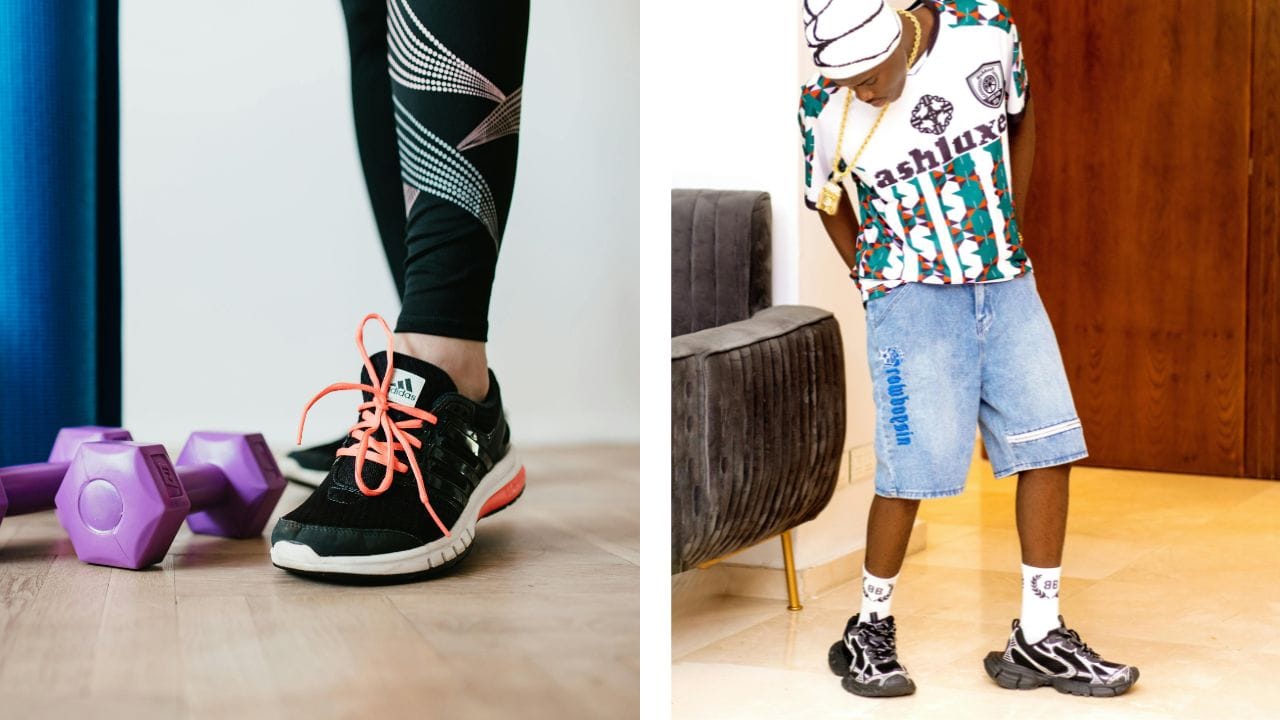Transitioning to Barefoot Shoes: Master the Shift with Ease
Gradually incorporate them into your routine, starting with short periods and increasing the duration as your feet adjust.

Key Takeaways:
- Understand the Benefits: Barefoot shoes offer numerous health benefits, including improved posture and stronger foot muscles.
- Gradual Transition: Switching to barefoot shoes should be done gradually to avoid injury and allow your feet to adapt.
- Proper Techniques: Learn the proper techniques for walking and running in barefoot shoes to maximize benefits and minimize risks.
Introduction to Barefoot Shoes
Barefoot shoes have been gaining popularity for their potential health benefits and the natural feel they provide. Unlike traditional footwear, barefoot shoes are designed to mimic the natural shape and movement of your feet. They offer minimal cushioning and support, encouraging your feet to move as they would if you were walking barefoot.
The idea behind barefoot shoes is to promote a more natural gait and strengthen the muscles in your feet and lower legs. This can lead to improved posture, reduced risk of injury, and a more comfortable walking or running experience. However, transitioning to barefoot shoes requires careful planning and a gradual approach to avoid potential issues.
Benefits of Barefoot Shoes
One of the primary benefits of barefoot shoes is the improvement in foot strength. Traditional shoes often provide too much support, which can lead to weaker foot muscles over time. Barefoot shoes, on the other hand, encourage your feet to work harder, strengthening the muscles and improving overall foot health.
Another significant benefit is the enhancement of proprioception, or the awareness of your body's position in space. Barefoot shoes allow you to feel the ground beneath your feet, providing valuable feedback that can improve balance and coordination. This heightened sense of awareness can also help prevent injuries by allowing you to react more quickly to changes in terrain.
Choosing the Right Barefoot Shoes
When selecting barefoot shoes, it's essential to consider the fit and feel. Look for shoes that have a wide toe box, allowing your toes to spread naturally. The sole should be thin and flexible, providing minimal interference with your foot's natural movement. It's also important to choose shoes made from breathable materials to keep your feet comfortable.
Another factor to consider is the type of activity you'll be doing. There are barefoot shoes designed specifically for running, walking, hiking, and even casual wear. Make sure to choose a pair that suits your needs and provides the right level of protection for the activities you plan to engage in.
Gradual Transition to Barefoot Shoes
Transitioning to barefoot shoes should be done gradually to allow your feet to adapt. Start by wearing your new shoes for short periods, such as 15-20 minutes a day, and gradually increase the duration over several weeks. This will help your feet adjust to the new sensations and build strength without causing injury.
It's also a good idea to incorporate foot-strengthening exercises into your routine. Simple exercises like toe curls, calf raises, and arch lifts can help prepare your feet for the demands of barefoot shoes. Consistency is key, so make sure to perform these exercises regularly.
Proper Walking Technique
Walking in barefoot shoes requires a slightly different technique than walking in traditional shoes. Focus on landing on the midfoot or forefoot rather than the heel. This helps to distribute the impact more evenly and reduces the risk of injury. Keep your steps short and light, and try to maintain a natural, relaxed gait.
Pay attention to your posture as well. Stand tall with your shoulders back and your head aligned with your spine. This will help you maintain balance and reduce strain on your joints. As you become more comfortable with barefoot walking, you'll likely notice improvements in your overall posture and walking efficiency.
Running in Barefoot Shoes
Running in barefoot shoes can be a rewarding experience, but it requires proper technique to avoid injury. Start by running on soft surfaces like grass or dirt to reduce the impact on your feet. Focus on landing on the midfoot or forefoot and avoid striking the ground with your heels.
Keep your strides short and your cadence high. This means taking more steps per minute, which can help reduce the impact on your joints. Listen to your body and take breaks if you feel any discomfort. Gradually increase your running distance and intensity as your feet become stronger and more accustomed to barefoot shoes.
Common Mistakes to Avoid
One common mistake when transitioning to barefoot shoes is doing too much too soon. It's important to give your feet time to adapt to the new sensations and demands. Rushing the process can lead to injuries such as stress fractures or plantar fasciitis.
Another mistake is neglecting foot care. Barefoot shoes expose your feet to different surfaces and conditions, so it's essential to keep your feet clean and moisturized. Regularly check for any signs of blisters, calluses, or other issues, and address them promptly to prevent complications.
Foot Strengthening Exercises
Incorporating foot-strengthening exercises into your routine can help ease the transition to barefoot shoes. Toe curls are a simple exercise that involves curling your toes and holding the position for a few seconds before releasing. This helps to strengthen the muscles in your toes and arches.
Calf raises are another effective exercise. Stand on the edge of a step with your heels hanging off, then raise your heels as high as possible before lowering them back down. This exercise targets the muscles in your calves and feet, helping to build strength and stability.
Listening to Your Body
Listening to your body is crucial when transitioning to barefoot shoes. Pay attention to any signs of discomfort or pain, and take breaks as needed. It's better to progress slowly and avoid injury than to push yourself too hard and risk setbacks.
If you experience persistent pain or discomfort, consider consulting a healthcare professional. They can provide guidance and recommendations based on your specific needs and help you make a safe and effective transition to barefoot shoes.
Incorporating Barefoot Shoes into Daily Life
Once you've successfully transitioned to barefoot shoes, you can start incorporating them into your daily life. Wear them for everyday activities like walking, running errands, or even at work if your environment allows. The more you wear them, the more benefits you'll experience.
Remember to continue practicing proper walking and running techniques, and keep up with your foot-strengthening exercises. This will help you maintain the benefits of barefoot shoes and ensure your feet stay healthy and strong.
Case Study: Successful Transition
Jane, a 35-year-old office worker, decided to switch to barefoot shoes after experiencing chronic foot pain. She started by wearing her new shoes for short walks around her neighborhood, gradually increasing the duration over several weeks. Jane also incorporated foot-strengthening exercises into her routine, which helped her build the necessary strength and stability.
After a few months, Jane noticed significant improvements in her foot pain and overall posture. She was able to wear her barefoot shoes for longer periods and even started running in them. Jane's successful transition highlights the importance of a gradual approach and consistent foot care.
Case Study: Overcoming Challenges
John, a 40-year-old avid runner, faced challenges when transitioning to barefoot shoes. He initially experienced discomfort and minor injuries due to improper technique and rushing the process. After seeking advice from a healthcare professional, John adjusted his approach and focused on proper running form and foot-strengthening exercises.
With patience and persistence, John was able to overcome the challenges and successfully transition to barefoot shoes. He now enjoys running pain-free and has noticed improvements in his overall performance and foot health.
Tips for Success
To ensure a successful transition to barefoot shoes, follow these tips:
- Start Slow: Gradually increase the duration and intensity of wearing barefoot shoes.
- Focus on Technique: Practice proper walking and running techniques to avoid injury.
- Strengthen Your Feet: Incorporate foot-strengthening exercises into your routine.
- Listen to Your Body: Pay attention to any signs of discomfort and take breaks as needed.
- Seek Professional Advice: Consult a healthcare professional if you experience persistent pain or discomfort.
Summary
Transitioning to barefoot shoes can offer numerous health benefits, including improved foot strength, posture, and proprioception. However, it's essential to approach the transition gradually and with proper technique to avoid injury.
By following the tips and guidelines in this article, you can successfully transition to barefoot shoes and enjoy their numerous benefits. Click the link below to discover our handpicked selection of barefoot shoes, perfect for introducing you to this unique footwear experience.

